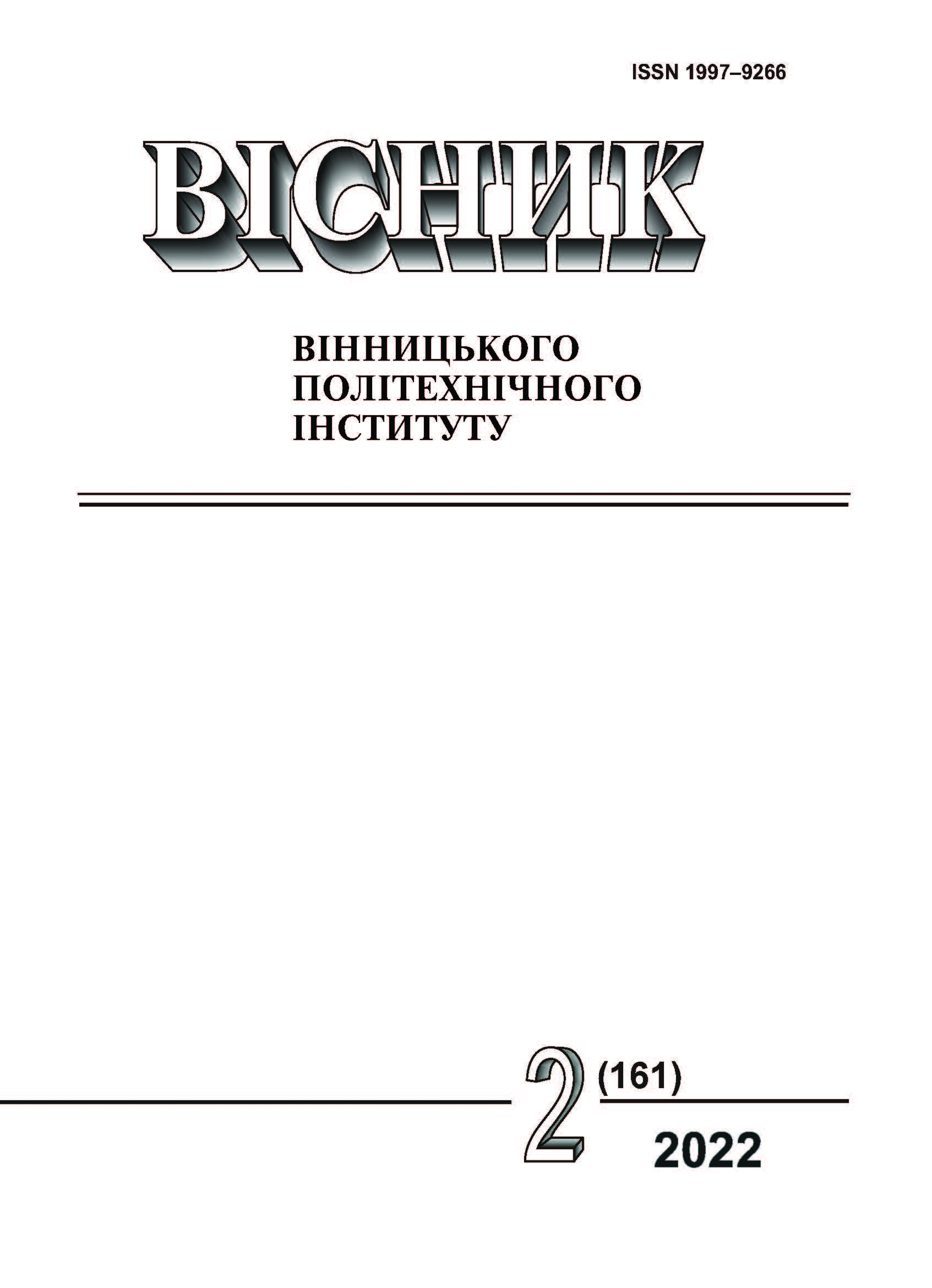Pre-Recrystallization Heat Treatment Effect on Physical and Mechanical Properties of Functional Electric Arc Composite Coatings
DOI:
https://doi.org/10.31649/1997-9266-2022-161-2-94-100Keywords:
electric arc spraying, composite coatings, nanostructuring, heat treatment, microhardnessAbstract
In this work, the possibility of using pre-recrystallization heat treatment to improve the properties complex of composite electric arc sprayed coatings of the wire Sv-08G2S–Al2O3 and wire 65G-TiC systems, which are formed, using a hardening phase powder in a free form, is studied. At the first stage of research, the optimal temperature-time parameters of heat treatment were established for traditional unfilled coatings made of wire Sv-08G2S (temperature 450 °C, holding time 2 min) and 65G (temperature 400 °C, holding time 3 min), which provides an increase in Vickers hardness by 40 % and 26 % respectively. An analysis of the diffraction patterns obtained using a DRON-3 X-ray diffractometer showed a clear expansion of the diffraction peaks after heat treatment, which is associated with the refinement of the structural elements of the coating. Further determination of the size of the regions of coherent X-ray scattering using the Scherrer formula and using the harmonic analysis of heat-treated coatings showed a significant decrease in this characteristic to the level of 100 nm. It was found that the microhardness of the metal matrix of the coatings after deposition of the composition Sv-08G2S–Al2O3 was 1.6 GPa; 65G–TiC ― 2.6 GPa. It has been established that the optimal mode of heat treatment for coatings Sv-08G2S–Al2O3 is holding time 1 min at a temperature of 450 °C; for 65G–TiC coatings ― 2 min, 400 °C, while the maximum increase in the microhardness of the metal base by 54 % and 38 %, respectively, is observed. A more significant effect of increasing the hardness of composite coatings compared to unfilled coatings after processing is explained by additional work hardening of the metal matrix by high-speed hard particles of Al2O3 and TiC. Metallographic studies on a REMMA 102-02 scanning electron microscope-microanalyzer and ZEISS Gemini SEM 500 showed that the composite coatings are characterized by a typical lamellar structure and particles of the dispersed hardening phase (Al2O3, TiC) are well differentiated. After heat treatment, no structural changes are observed, porosity remains at the same level (about 8 % and 5 %, respectively). Experimental studies of bond strength using the pin method found that pre-recrystallization heat treatment provides an increase in bond strength by 15…20 % compared to coatings after spraying.
References
S. V. Mal’tseva, I. P. Mel’nikova, A. V. Lyasnikova, and A. M. Zaharevich, “Structure and properties of modified plasma-sprayed composite coatings on a titanium base,” Mechanics of Composite Materials, vol. 52, pp. 531-534, 2016. https://doi.org/10.1007/s11029-016-9603-2 .
Y. S. Borisov, A. L. Borisova, and M. V. Kolomytsev, “High-Velocity Air Plasma Spraying of (Ti, Cr)C–32 wt.% Ni Clad Powder,” Powder Metallurgy and Metal Ceramics, vol. 56, pp. 305-315, 2017. https://doi.org/10.1007/s11106-017-9898-0 .
А. А. Карпеченко, М. М. Бобров, і О. О. Лимар, «Електродугове напилення композиційних металополімерних покриттів,» Вісник Вінницького політехнічного інституту, № 2, с. 114-119, 2021. https://doi.org/10.31649/1997-9266-2021-155-2-114-119 .
А. А. Карпеченко, М. М. Бобров, О. М. Дубовий, Т. О. Макруха, і Є. Ю. Неделько, «Формування композиційних металокерамічних та металокарбідних електродугових покриттів,» Вісник Національного технічного університету « ХПІ», Серія: Нові рішення в сучасних технологіях, № 1 (7), с. 9-17, 2021. https://doi.org/10.20998/2413-4295.2021.01.02 .
S. M. Hashemi, N. Parvin, and Z. Valefi, “Effect of Addition of Multimodal YSZ and SiC Powders on the Mechanical Properties of Nanostructured Cr2O3 Plasma-Sprayed Coatings,” Journal of Thermal Spray Technology, vol. 28. pp. 544-554, 2019. https://doi.org/10.1007/s11666-019-00834-8 .
R. Vaßen, H. Kaßner, G. Mauer, and D. Stover, “Suspension Plasma Spraying: Process Characteristics and Applications,” Journal of Thermal Spray Technology, vol. 19 (1-2), pp. 219-225, 2010. https://doi.org/10.1007/s11666-009-9451-x .
М. О. Васильєв, М. О. Мордюк, С. І. Сидоренко, С. М. Волошко, А. П. Бурмак, і М. В. Кіндрачук, «Синтез деформаційних нанокомпозитів на поверхні алюмінієвого сплаву Д16 за допомогою ультразвукового ударного оброблення,» Металофізика та новітні технології, № 4, с. 545-563, 2016. https://doi.org/10.15407/mfint.38.04.0545 .
A. Y. Ivannikov, et. al., “The Effect of Electromechanical Treatment on Structure and Properties of Plasma-Sprayed Fe-30Cr Coating,” Journal of Thermal Spray Technology, vol 28, pp. 883-892, 2019. https://doi.org/10.1007/s11666-019-00868-y .
О. М. Дубовий, А. А. Карпеченко, М. М. Бобров, О. В. Лабарткава, Ю. Є. Неделько, і О. О. Лимар, «Підвищення фізико-механічних та експлуатаційних властивостей електродугових та плазмових покриттів формуванням термічно стабільної здрібненої і нанорозмірної субструктури,» Металофізика та новітні технології, № 4, с. 461-480, 2019. https://doi.org/10.15407/mfint.41.04.0461.
О. М. Дубовий, А. А. Карпеченко, М. М. Бобров, і А. О. Мазуренко, «Пристрій для електродугового напилення композиційних покриттів», Патент 111760 Україна, МПК C23C 26/02, B05B 7/22 -а 2014 07318; заявл. 01.07.2014; опубл. 10.06.2016, Бюл. № 11.
O. M. Dubovoy, A. A. Karpechenko, M. M. Bobrov, O. S. Gerasin, and O. O. Lymar, “Electric arc spraying of cermet coatings of steel 65G-TiC system,” Naukovyi Visnyk Natsionalnoho Hirnychoho Universytetu, vol. 2, pp. 63-68, 2021. https://doi.org/10.33271/nvngu/2021-2/063.
С. С. Горелик, Ю. А. Скаков, и Л. Н. Расторгуев, Рентгенографический и электронно-оптический анализ. Москва: МИСиС, 1994, 328 с.
Downloads
-
pdf (Українська)
Downloads: 117
Published
How to Cite
Issue
Section
License

This work is licensed under a Creative Commons Attribution 4.0 International License.
Authors who publish with this journal agree to the following terms:
- Authors retain copyright and grant the journal right of first publication.
- Authors are able to enter into separate, additional contractual arrangements for the non-exclusive distribution of the journal's published version of the work (e.g., post it to an institutional repository or publish it in a book), with an acknowledgment of its initial publication in this journal.
- Authors are permitted and encouraged to post their work online (e.g., in institutional repositories or on their website) prior to and during the submission process, as it can lead to productive exchanges, as well as earlier and greater citation of published work (See The Effect of Open Access).





